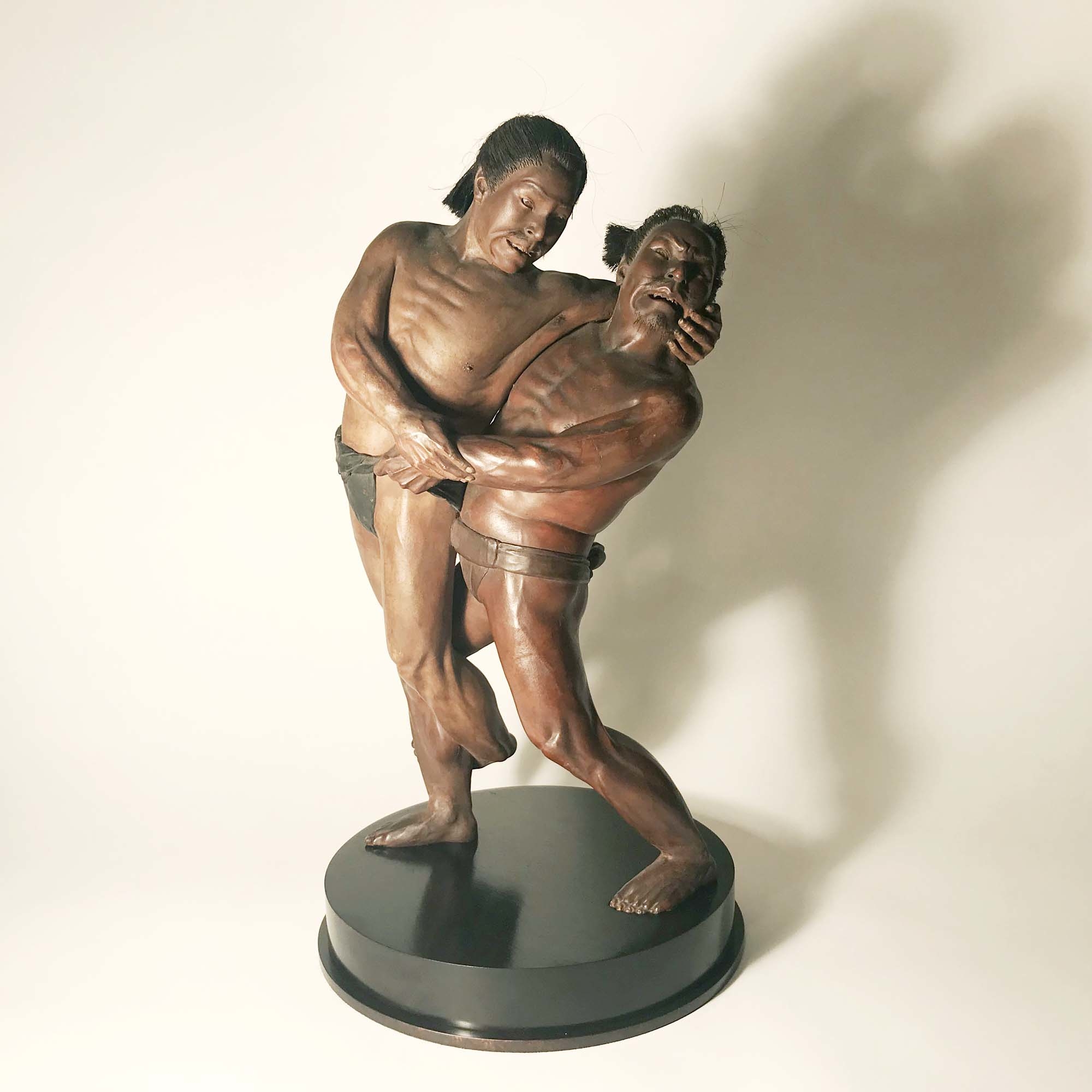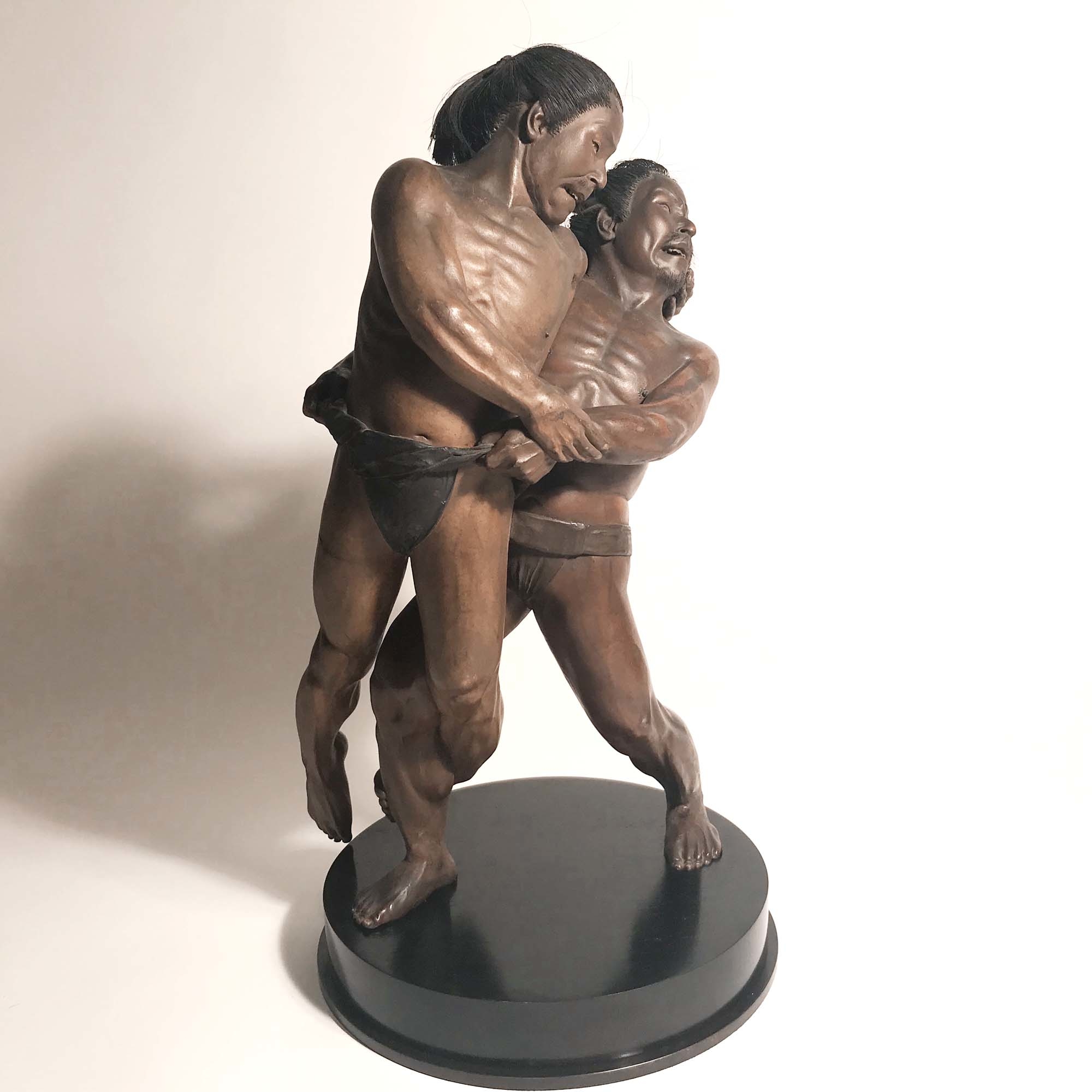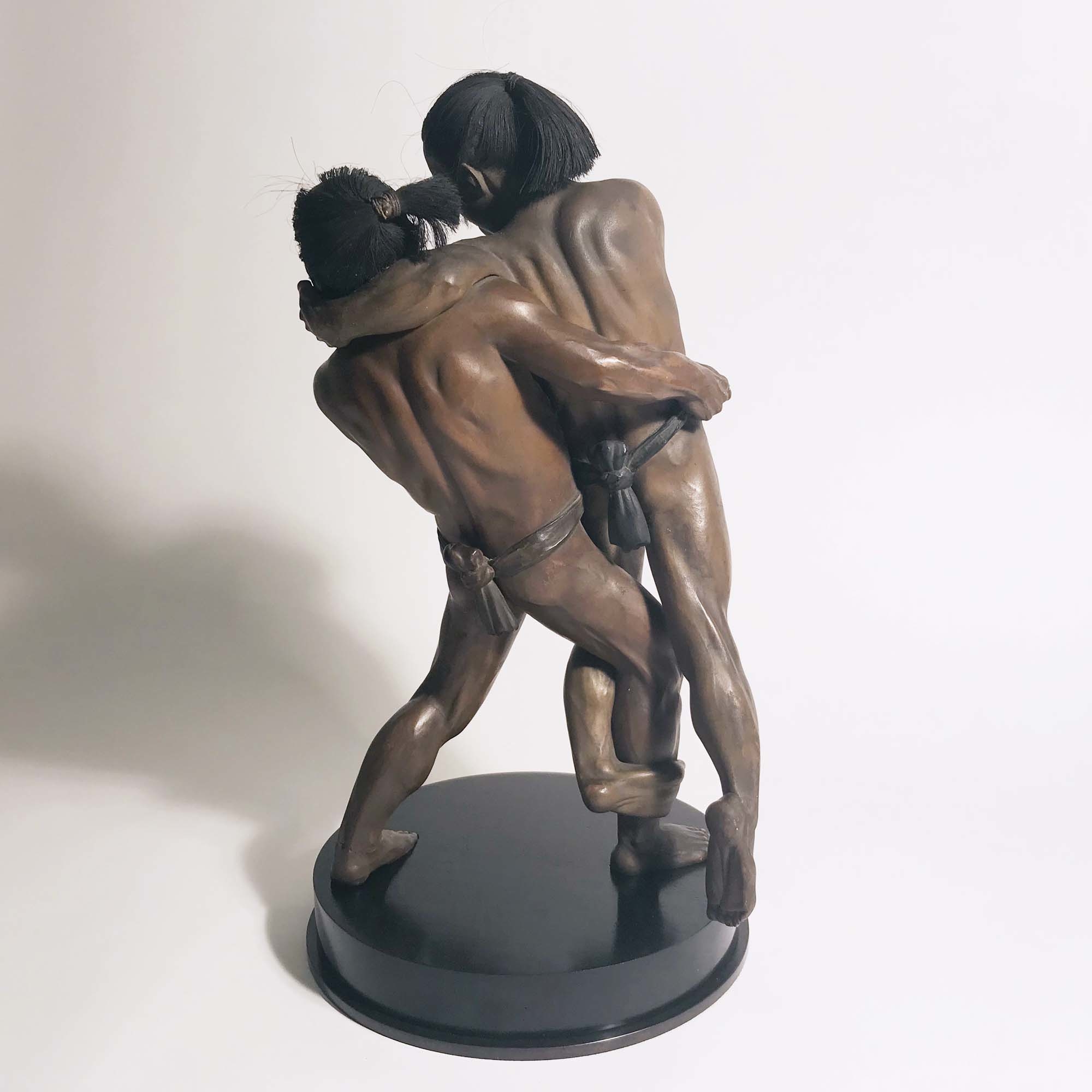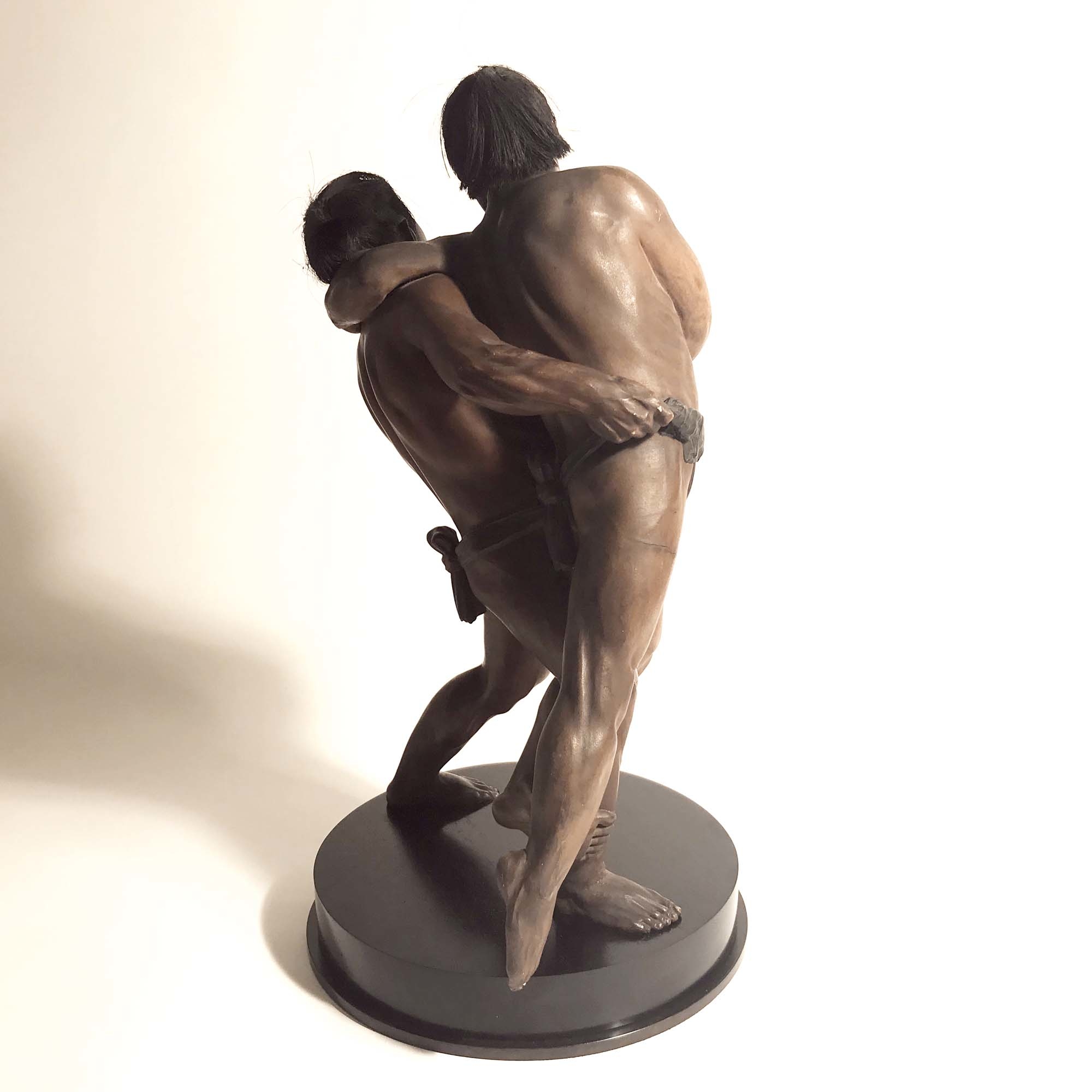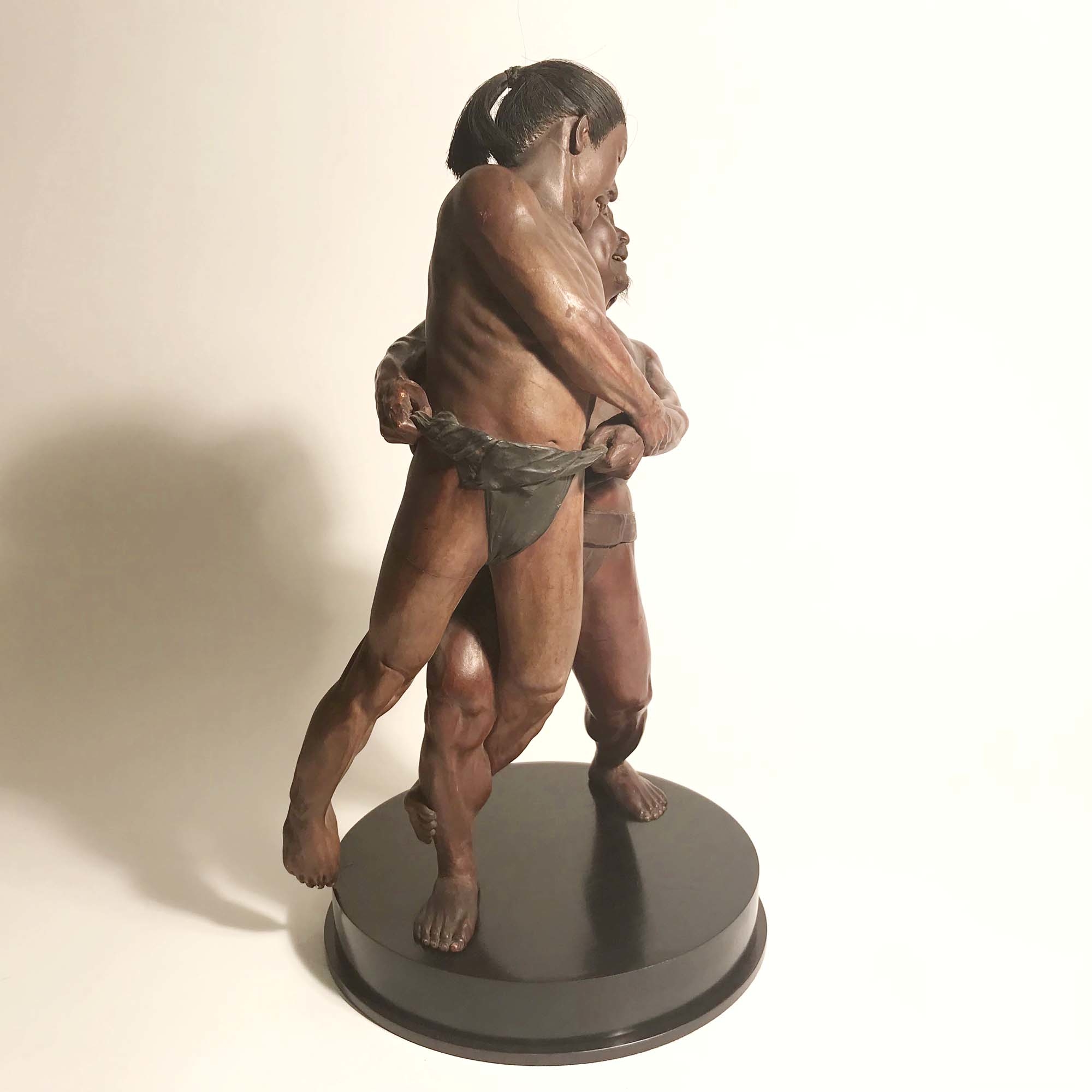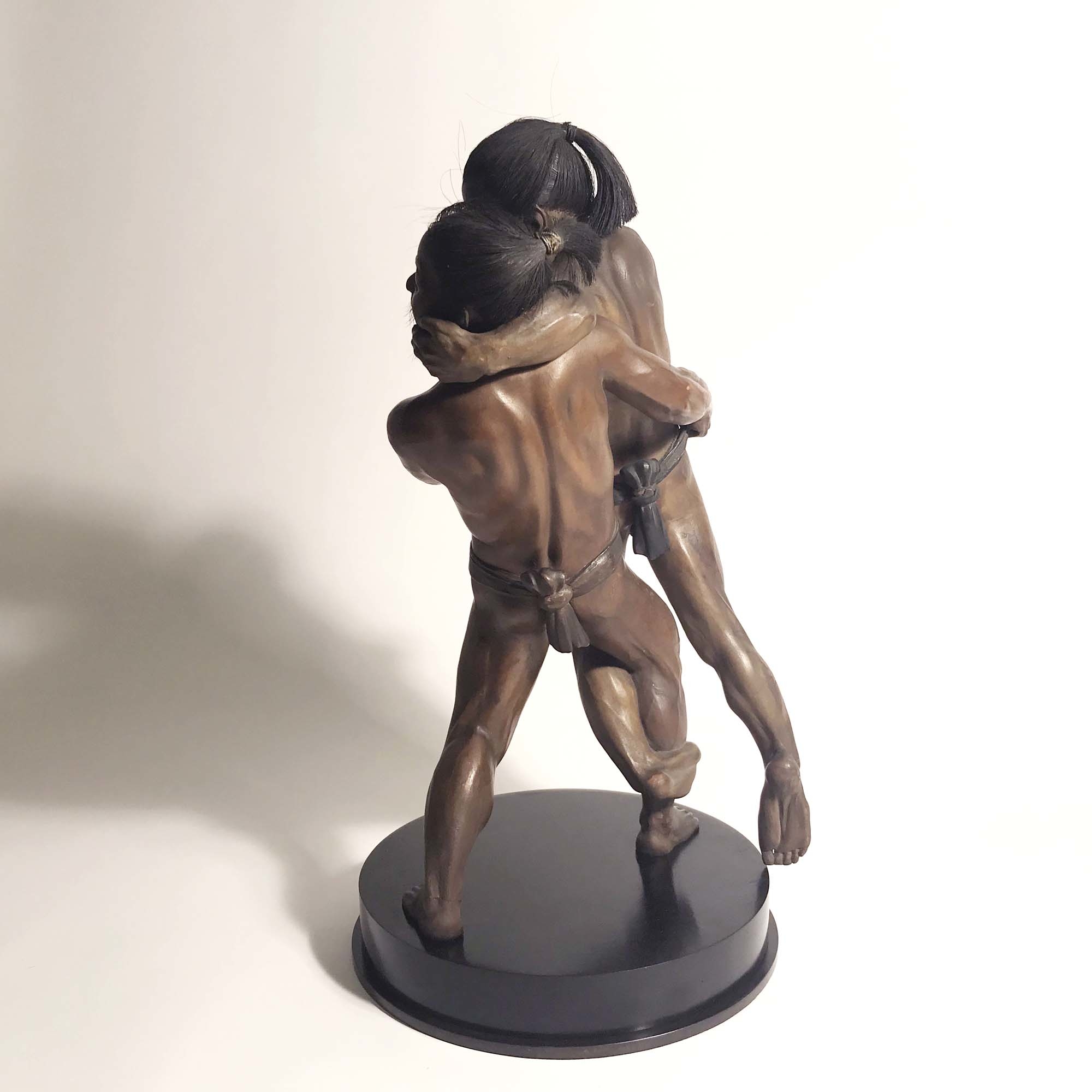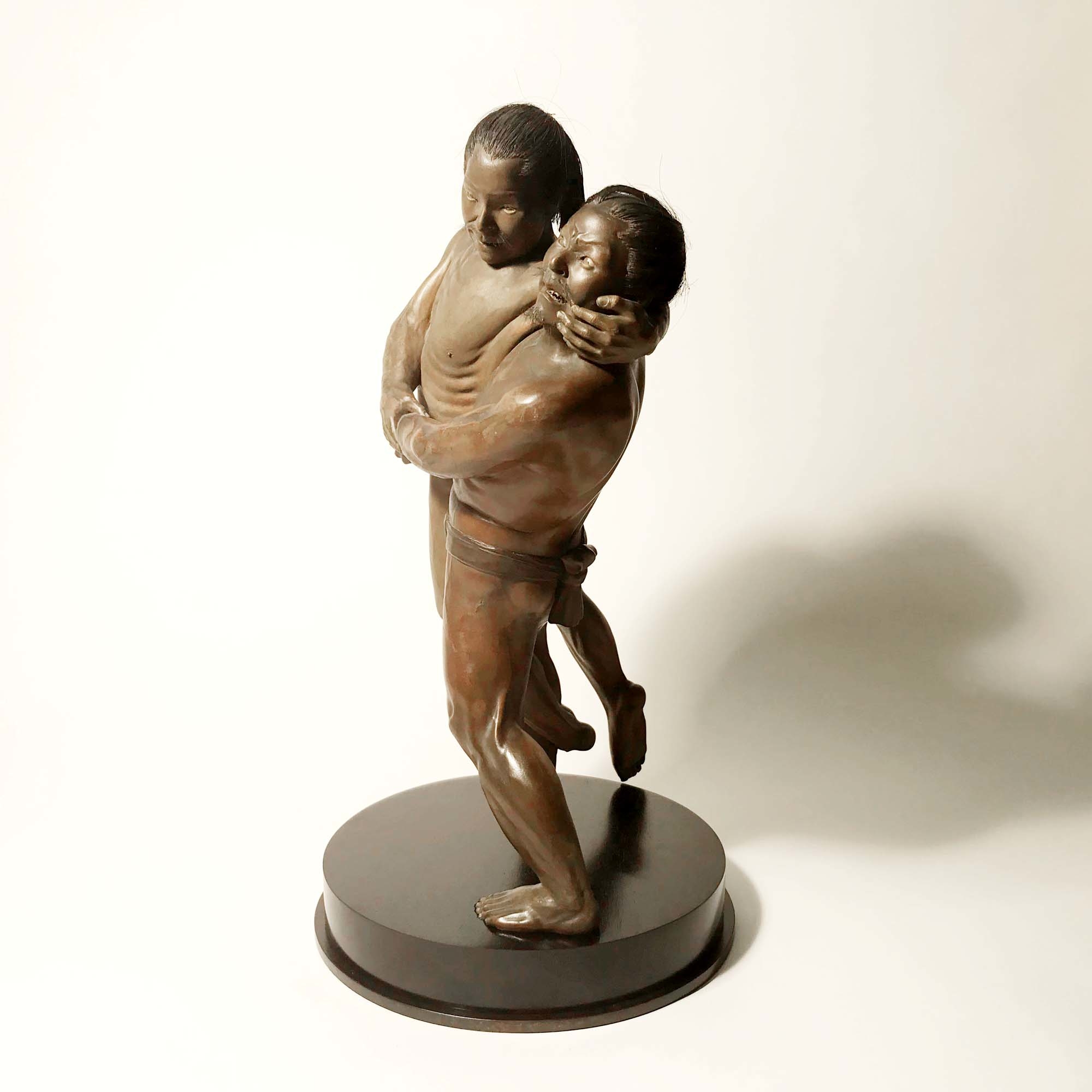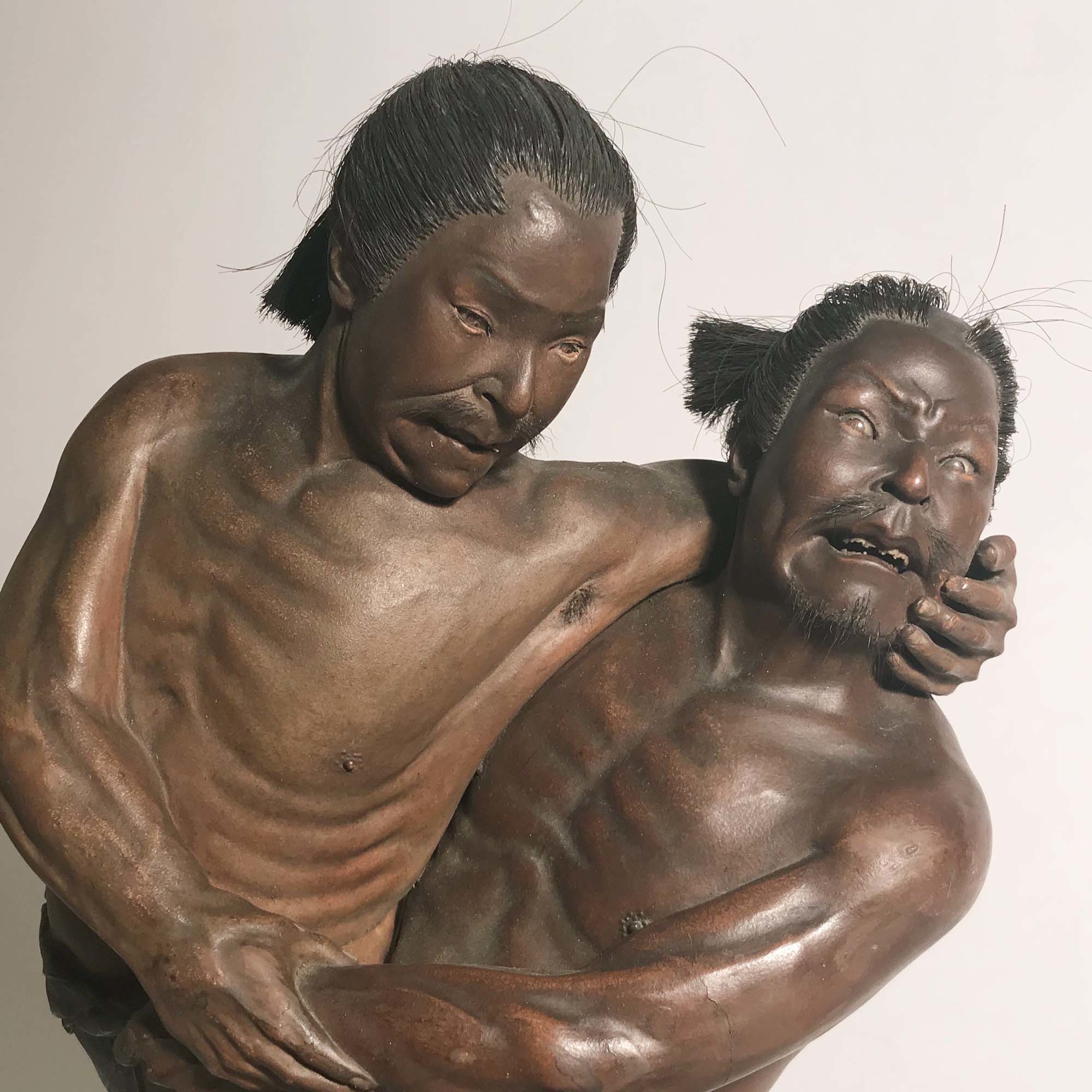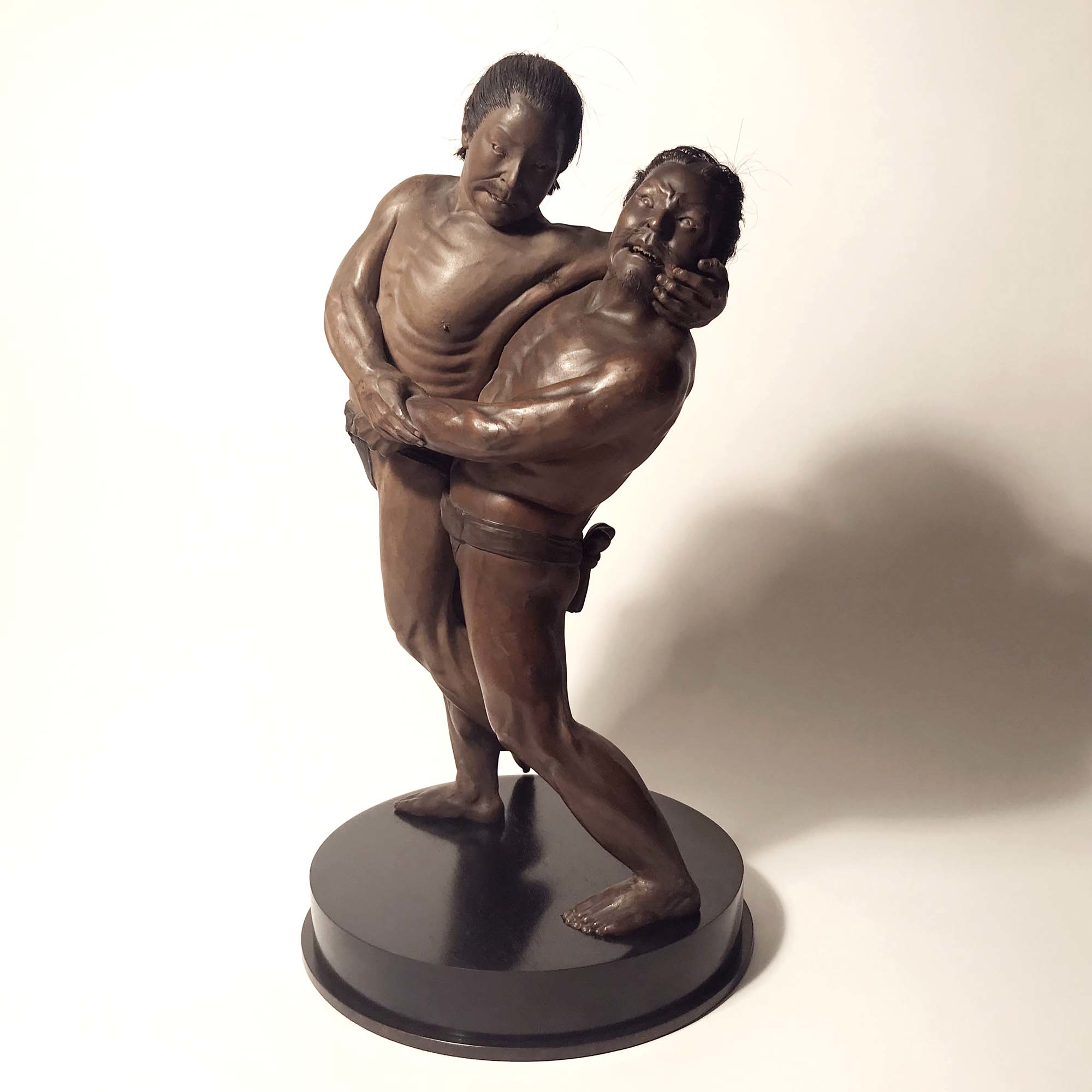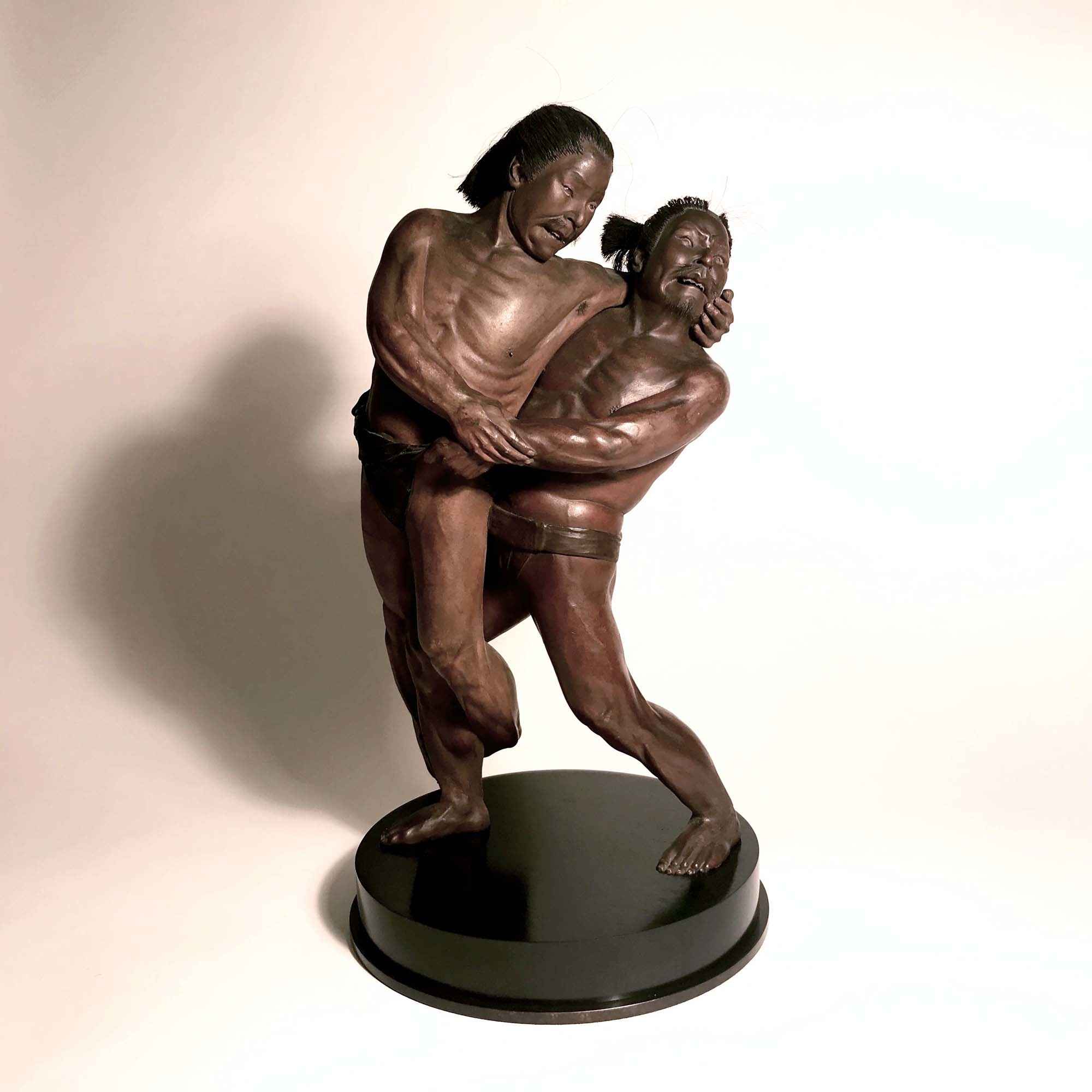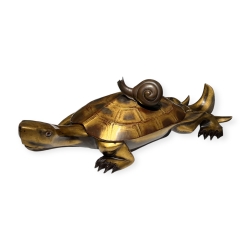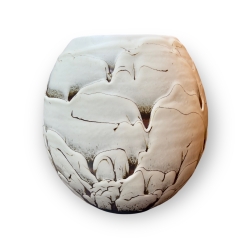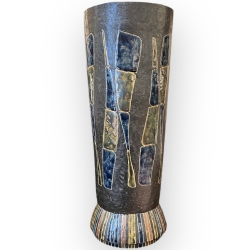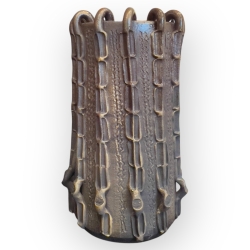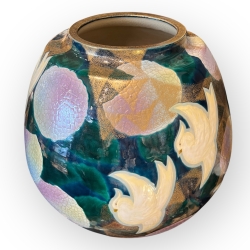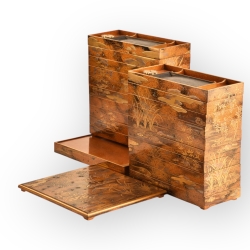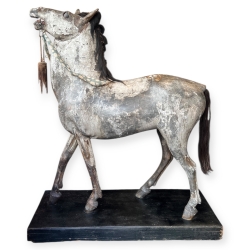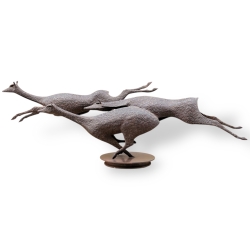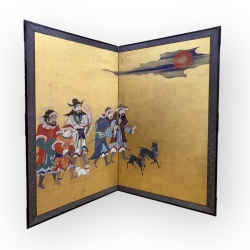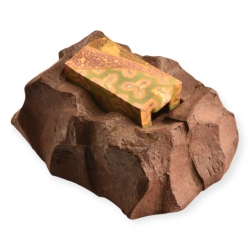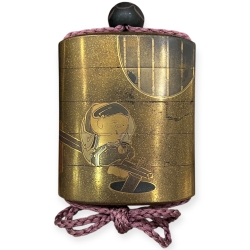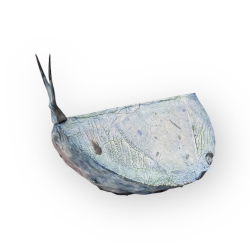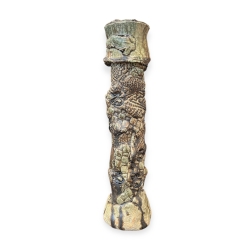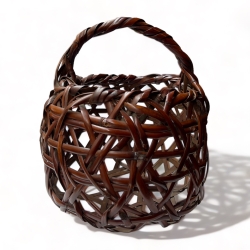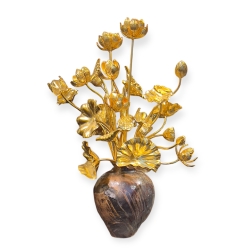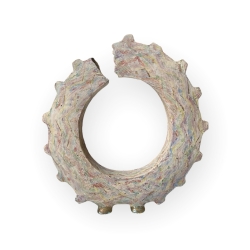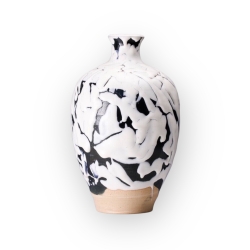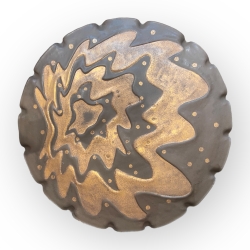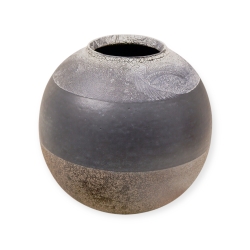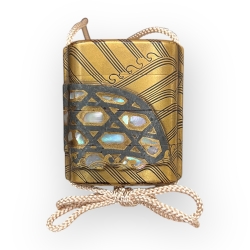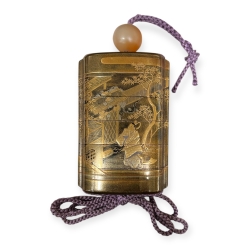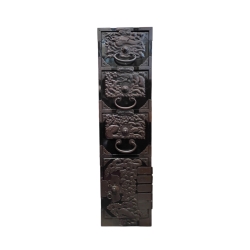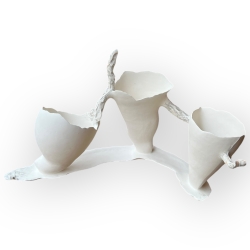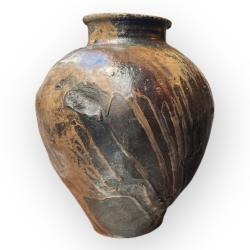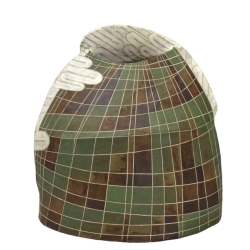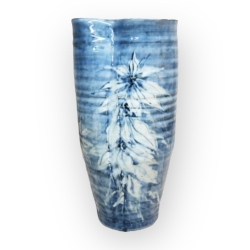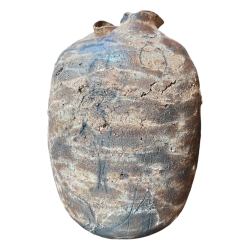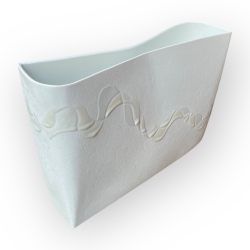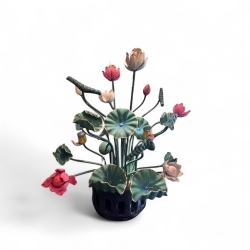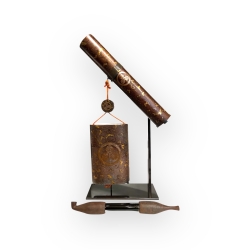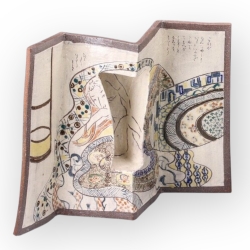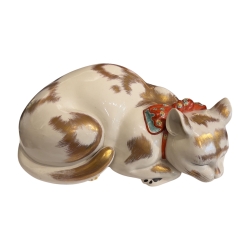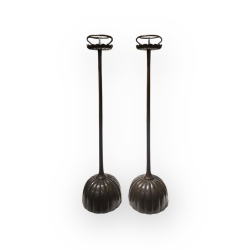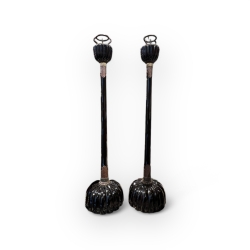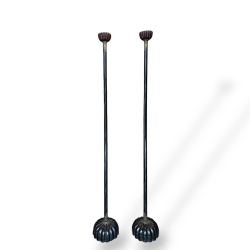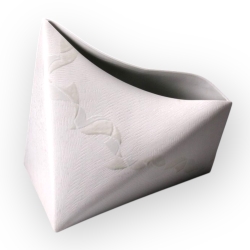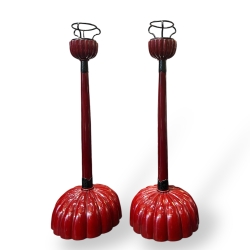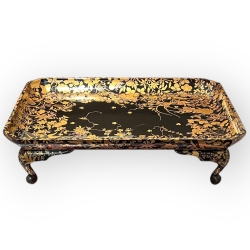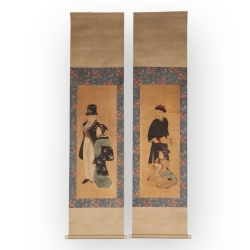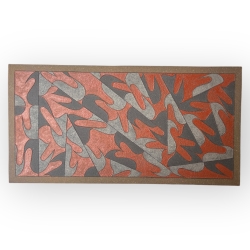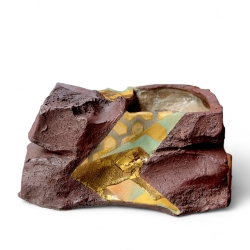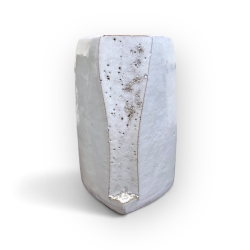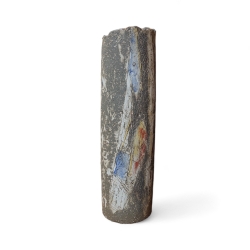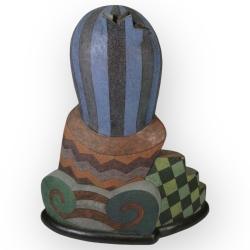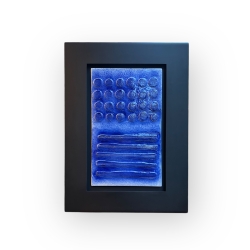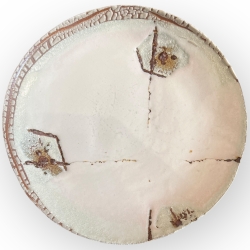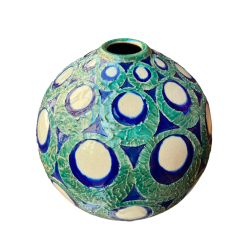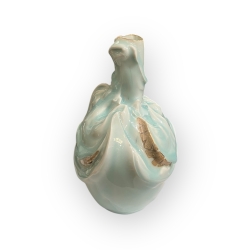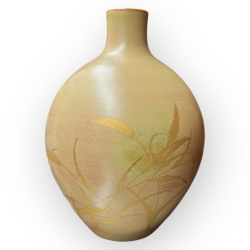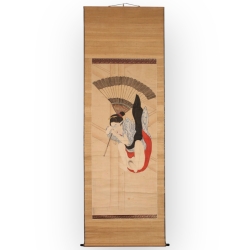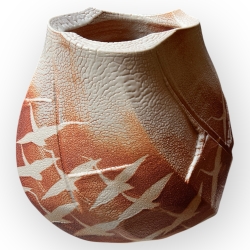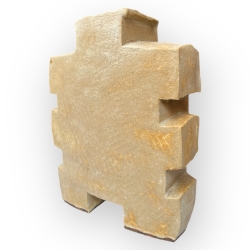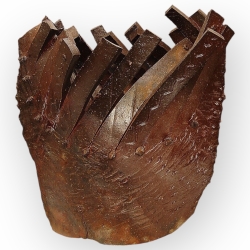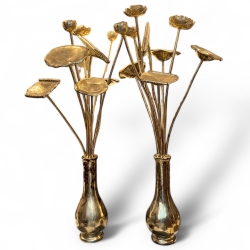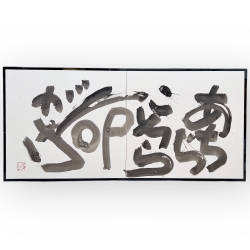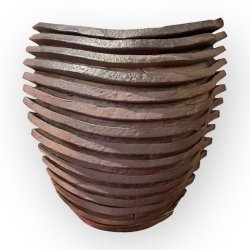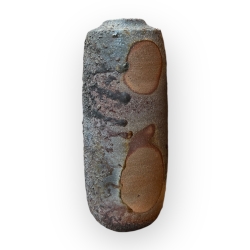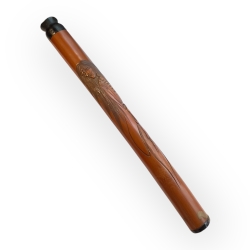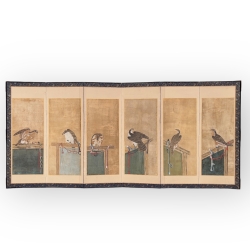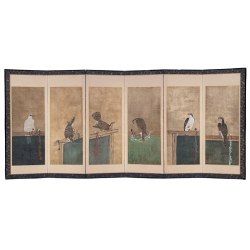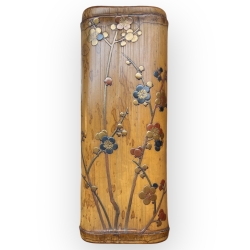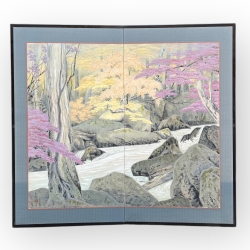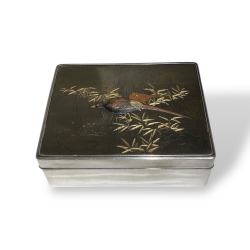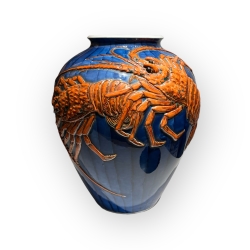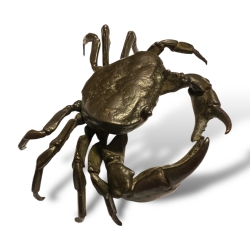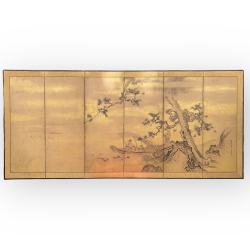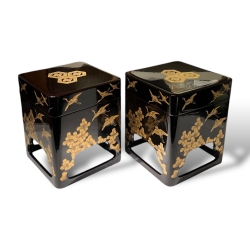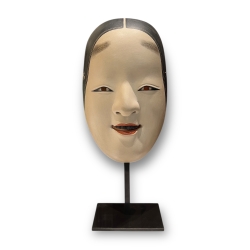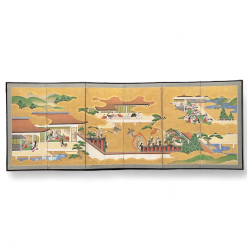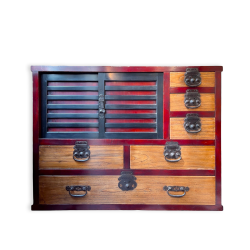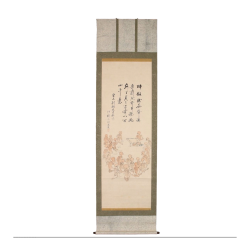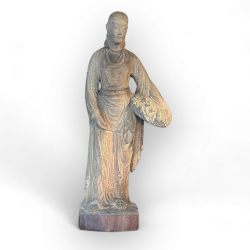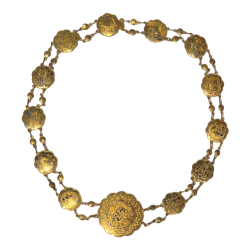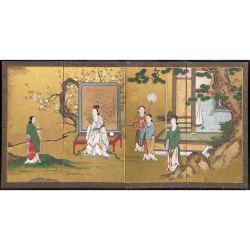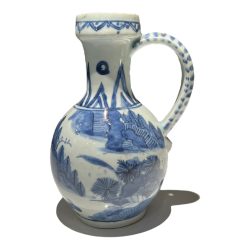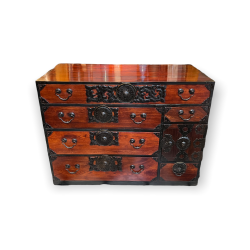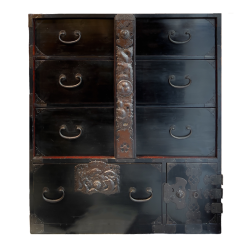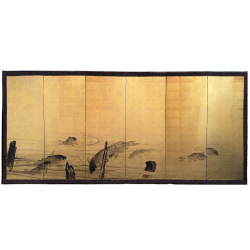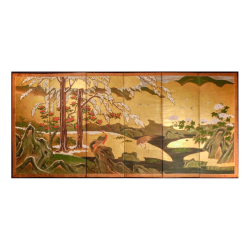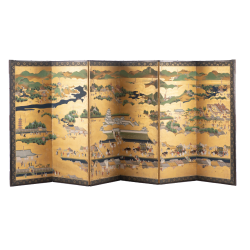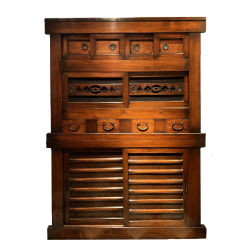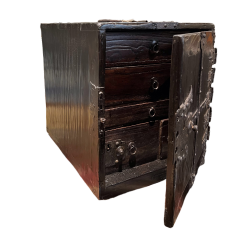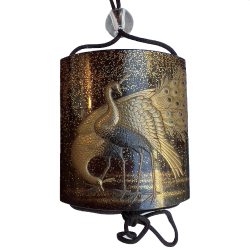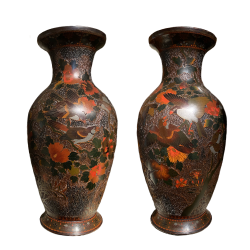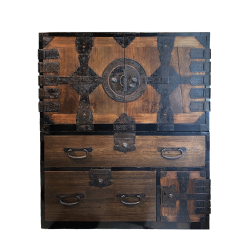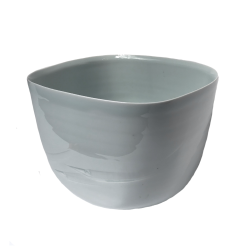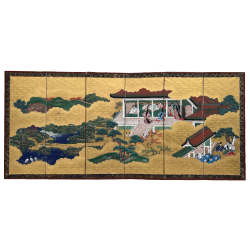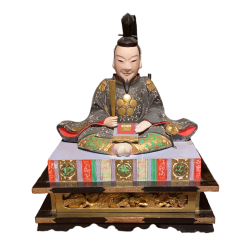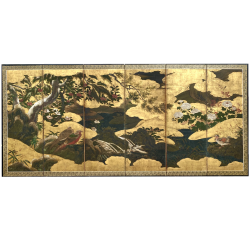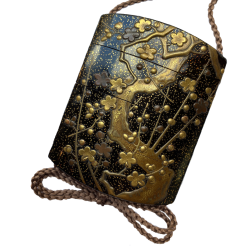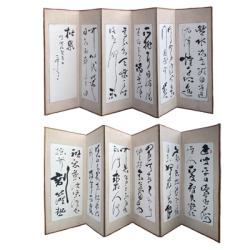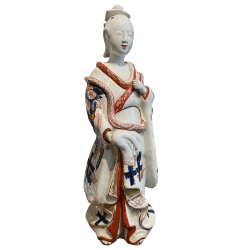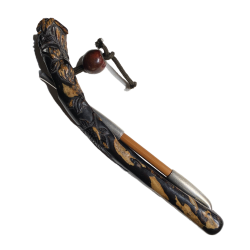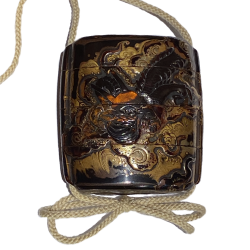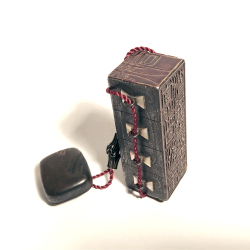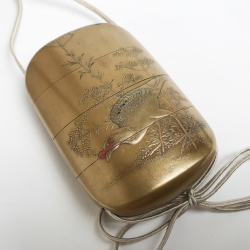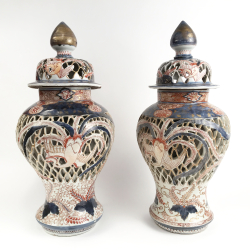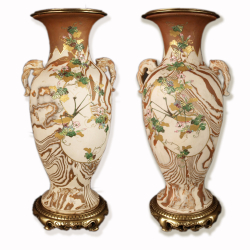
EXPERT ART d'ASIE Cristina ORTEGA Expert CNES et CEFA rts de la Chine et du Japon Asian Art-
Expert Chine Japon- Expert Asian Art - Carré Rive Gauche Paris Rue de Beaune- Expert art d Asie
VENDU / SOLD Les lutteurs, Iki ningyo, att à Hanuma Masakichi, Japon, vers 1890
Cette sculpture sur bois recouverte de gofun et laque (iki-ningyo, également appelée «poupée vivante») représente un illustre combat qui eut lieu en 1176 après J.-C. entre les Samurai Sumo, Matano Goro (à gauche) et Kawatsu Saburo (à droite).
Après environ 21 combats, Kawatso Saburo est sorti victorieux. Matano n'admet pas sa défaite et fait assassiner Kawatso en rentrant chez lui.
Un modèle grandeur nature du même sujet, également de Hananuma Masakichi
a été offert au musée de Sheffield en 1891 par Harry Deakin.
40/45cm (avec socle) x 23 cm x 16 cm
Japon, époque Meiji, vers 1890.
Ce combat emblématique symbolise le contact entre l'homme, la force et l'esprit qui persiste encore dans le sumo à ce jour
Le sumo a été enregistré pour la première fois en 23 av.JC. Ses origines sont basées sur un ensemble de croyances religieuses proches de la religion Shinto ou «la voie des dieux». C'est maintenant un sport national au Japon. Le sumo a commencé comme une forme de rituel pour divertir les dieux (kami) lors de festivals, connus sous le nom de matsuri, comme des rituels aux kami en tant que prières pour une bonne récolte. Ces premiers liens avec le shinto sont encore évidents dans les rituels de purification des combats de sumo d'aujourd'hui. Le sable qui recouvre l'anneau circulaire (dohyo) dans lequel se déroule le combat reflète la pureté et la canopée (yakata) recouvrant l'anneau est à la manière d'un sanctuaire shinto. L'arbitre (gyoji) ressemble à un prêtre shinto en costume traditionnel et le sel purifiant est jeté sur le ring avant le début du match.
Le sumo a été introduit dans les cérémonies de la cour impériale au 8ème siècle, mais pendant des siècles, il est devenu utile pour l'entraînement militaire des Samouraï. Au Moyen Âge, les lutteurs de sumo étaient très populaires parmi les artistes et recevaient des repas gratuits de la part de leurs fans. A partir du 17ème siècle, le Japon était en paix et prospère, ce qui a conduit à la montée d'une nouvelle classe de marchands aisés. Des groupes de sumo professionnels ont été formés pour divertir cette classe et peu après, le sumo est devenu le sport national du Japon. Aujourd'hui, c'est un sport populaire et les lutteurs de sumo ont le même statut que les acteurs.
The Wrestlers, iki-ningyo, doll, Japan, Meiji, attr to Hananuma Masakichi
This life size wood carving, gofun and lacquer iki-ningyo also known as 'living dolls' represents an illustrious fight which took place in AD 1176 between the Samurai Sumo warriors Matano Goro (on the left) and Kawatsu Saburo (on the right). After some 21 matches Kawatso Saburo emerged victorious symbolizing the flavour which still persists in Sumo to this day: contact between man, strength and spirit. Matano would not admit defeat and had Kawatso assassinated on his way home.
A life size figure of the same subject, also by Hananuma Masakichi can be seen in the Sheffield Museum, offered by Mr Harry Deakin in 1891 on his return from Japan.
Sumo was first recorded in 23 BC. Its origins are based on a set of religious beliefs known as Shinto or ???the way of the gods???. It is now a national sport in Japan. Sumo started as a form of ritual to entertain the gods (kami) during festivals, known as matsuri, and dedicated these rituals to the kami as prayers for a good harvest. These early links with Shinto are still evident in the purification rituals of sumo bouts today. The sand which covers the circular ring (dohyo) in which the bout is fought reflects purity and the canopy (yakata) covering the ring is in the style of a Shinto shrine. The referee (gyoji) resembles a Shinto priest in traditional robe, and the purifying salt is thrown into the ring before start of a match.
It was during the 8th Century when Sumo was introduced into the ceremonies of the Imperial Court, but for centuries after it became useful for military training during the age of the Samurai. During the Middle Ages, sumo wrestlers were very popular subject for the artists and they got treated to free meals by their fans. From the 17th Century onwards, Japan was in peace and prosperity which led to the rise of a new wealthy merchant class. Professional sumo groups were formed for entertaining this class and soon after, sumo became the national sport of Japan. Today, it is a popular sport and sumo wrestlers have similar status as actors and singers.
40/45cm with stand x 23cm x 16cm

